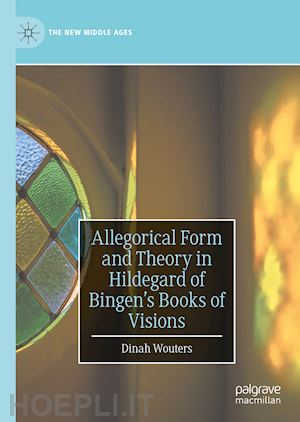1 Introduction.- Integumental Hermeneutics and Prescholastic Philosophy.- Allegory, Language, and Cognition.- Linking Allegorical Form to Allegorical Theory.-References.-2 Vision and Explanation.- Vision and Explanation.-The Function of the Allegory.-The Formal Interplay of Allegory and Allegoresis.- Allegory and Symbol.-References.-3 Allegory as Form and Concept.- Distinguishing Between Allegory and Allegoresis.-Prejudiced Distinctions in Modern Theory.-Blurred Distinctions in Medieval Hermeneutics.- Interactions Between Allegoresis and Allegory.-Allegory as Form: Figurative Language and Levels of Meaning.-Metaphor.- Pun.-Personification.-Metonymy.- Allegory as Idea: A Vital Belief and Conceptions of Allegory.-Language: Suprarealism and Self-Consciousness.-Reality: Fabulism and Figuralism.- Reversal of Values.-References.-4 Exegetical Form: The Eccentric Exegesis of the Homilies.-Creative Allegoresis in the Expositiones.-Multiple Interpretations and Narrative Continuity.- A Formal Definition for the Literal Level.-A Narrative Definition for the Senses of Scripture.-Creating a Narrative.- Exegetical Method: The Miraculous Catch of Allegory?.-The Allegoresis of the Expositionesand the Allegory of the Visions.-References.- 5 Allegorical form: Narrative, the Cosmos, and the End of Time.-The Narrative of the Parables.-The Reality of the Cosmos.- The Textuality of Visionary Reality.-The Reality of the Textual Cosmos.-The End of Time.- References.-6 Allegorical Cognition through Words.-Hildegard’s Model of the Mind.- Other Models of Cognition.-The Circular Mind.-Perceptions as Cognitive Agents.- The Absence of Mental Images.-The Essential Role of Words.-The Promotion of Words Over Images.- Hildegard’s Turn to Language.-Exegetical Cognition.-From Hermeneutics to Epistemology.- Allegorical Creation from Exegetical Method.-Glossing and Properties.-Allegorical Handbooks.- The Cognitive Dynamics of Reading Allegorically.-References.-7 Allegorical Revelation through Prophecy.- Allegorical Interpretation as an Essential Part of Revelation History.-The Old, the New, and the Interpretation of Each.-Allegory in Deeds and in Words.- Veils and Illumination.-Allegory and Forms of Prophecy.-Clarity, Obscurity, and Hildegard’s Prophetic Goals.- Different Kinds of Prophecy in Hildegard’s Works.-Cognition and Forms of Visionary Experience.-Augustine’s Theory of Vision.- Hildegard’s Visio Spiritualis/Intellectualis.-Augustine’s Cognitive Visions.-The Continuity Between Vision and Cognition in Medieval Texts.- Becoming a Prophet.-The Prophet and the Reader.-References.- 8 Beliefs about Language and the Construction of Allegorical Form.-Allegorical Visions and Scripture.-Exceptional Language and the Reference to Nature.- Reversal of Allegory and Allegoresis.-Allegorical Form and Truth.-Allegorical Language.- The Origin and Fall of Language.-In Search of a Theological Language.-A Sphere of Literary Symbolism?.- Hildegard’s Faith in Language.-Conclusion.-References.












